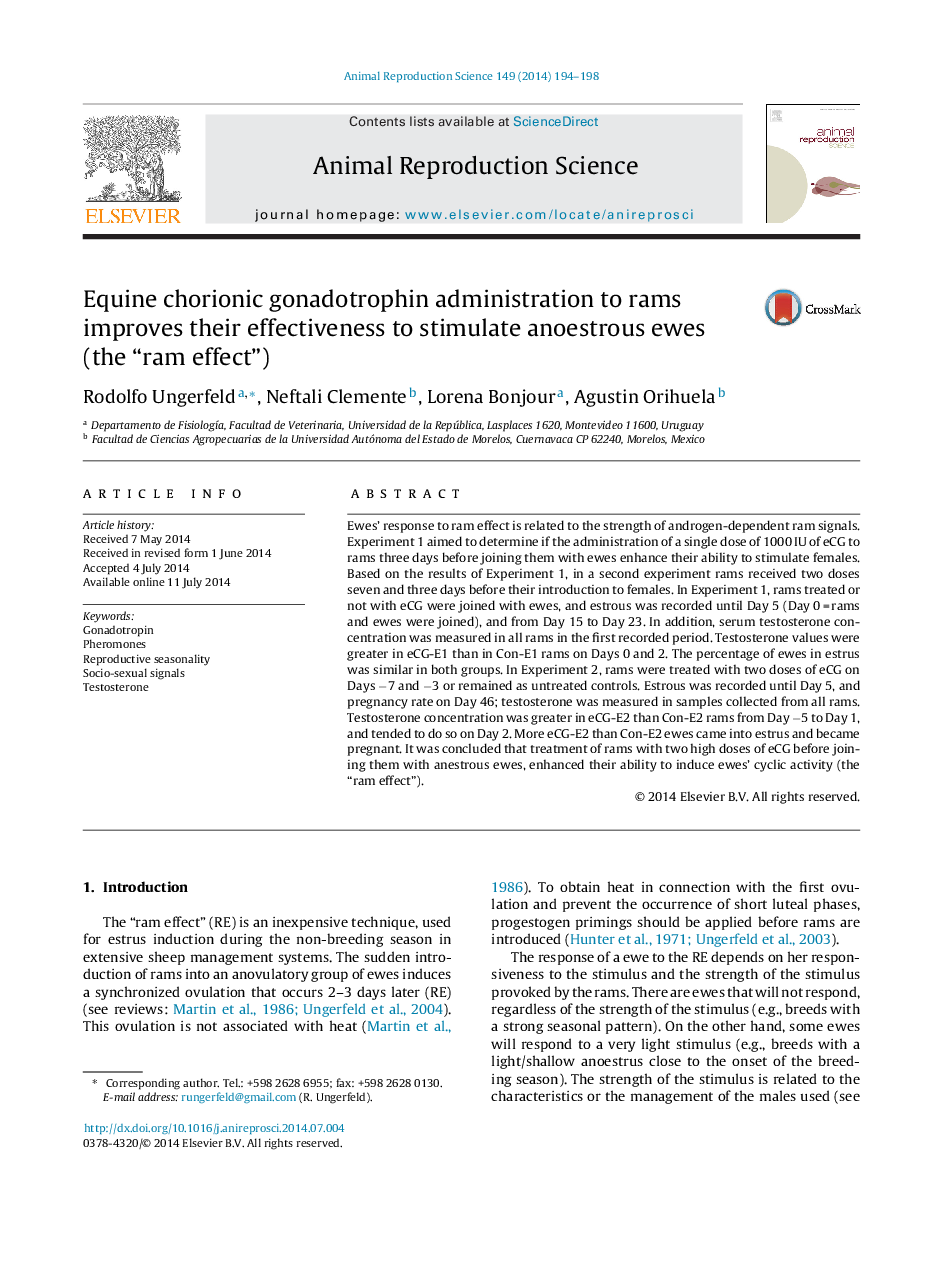| Article ID | Journal | Published Year | Pages | File Type |
|---|---|---|---|---|
| 8404583 | Animal Reproduction Science | 2014 | 5 Pages |
Abstract
Ewes' response to ram effect is related to the strength of androgen-dependent ram signals. Experiment 1 aimed to determine if the administration of a single dose of 1000Â IU of eCG to rams three days before joining them with ewes enhance their ability to stimulate females. Based on the results of Experiment 1, in a second experiment rams received two doses seven and three days before their introduction to females. In Experiment 1, rams treated or not with eCG were joined with ewes, and estrous was recorded until Day 5 (Day 0Â =Â rams and ewes were joined), and from Day 15 to Day 23. In addition, serum testosterone concentration was measured in all rams in the first recorded period. Testosterone values were greater in eCG-E1 than in Con-E1 rams on Days 0 and 2. The percentage of ewes in estrus was similar in both groups. In Experiment 2, rams were treated with two doses of eCG on Days â7 and â3 or remained as untreated controls. Estrous was recorded until Day 5, and pregnancy rate on Day 46; testosterone was measured in samples collected from all rams. Testosterone concentration was greater in eCG-E2 than Con-E2 rams from Day â5 to Day 1, and tended to do so on Day 2. More eCG-E2 than Con-E2 ewes came into estrus and became pregnant. It was concluded that treatment of rams with two high doses of eCG before joining them with anestrous ewes, enhanced their ability to induce ewes' cyclic activity (the “ram effect”).
Related Topics
Life Sciences
Agricultural and Biological Sciences
Animal Science and Zoology
Authors
Rodolfo Ungerfeld, Neftali Clemente, Lorena Bonjour, Agustin Orihuela,
